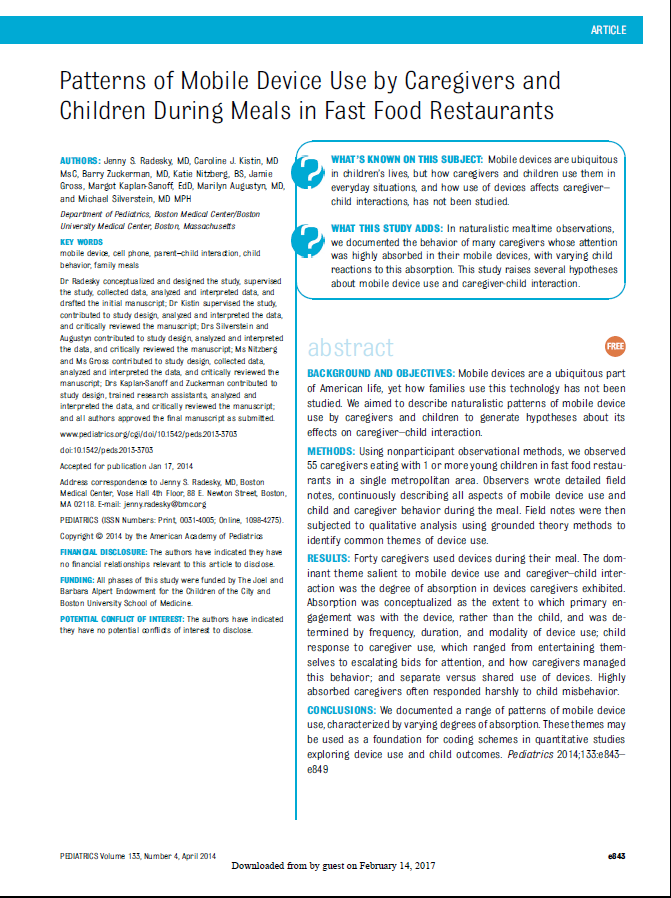Patterns of Mobile Device Use by Caregivers and Children During Meals in Fast Food Restaurants
Date
2014Author
Radesky, Jenny S.
Kistin, Caroline J.
Zuckerman, Barry
Nitzberg, Katie
Gross, Jamie
Kaplan-Sanoff, Margot
Augustyn, Marilyn
Silverstein, Michael
Metadata
Show full item recordAbstract
Background and Objectives: Mobile devices are a ubiquitous part of American life, yet how families use this technology has not been studied. We aimed to describe naturalistic patterns of mobile device use by caregivers and children to generate hypotheses about its effects on caregiver–child interaction. Methods: Using nonparticipant observational methods, we observed 55 caregivers eating with 1 or more young children in fast food restaurants in a single metropolitan area. Observers wrote detailed field notes, continuously describing all aspects of mobile device use and child and caregiver behavior during the meal. Field notes were then subjected to qualitative analysis using grounded theory methods to identify common themes of device use. Results: Forty caregivers used devices during their meal. The dominant theme salient to mobile device use and caregiver–child interaction was the degree of absorption in devices caregivers exhibited. Absorption was conceptualized as the extent to which primary engagement was with the device, rather than the child, and was determined by frequency, duration, and modality of device use; child response to caregiver use, which ranged from entertaining themselves to escalating bids for attention, and how caregivers managed this behavior; and separate versus shared use of devices. Highly absorbed caregivers often responded harshly to child misbehavior. Conclusions: We documented a range of patterns of mobile device use, characterized by varying degrees of absorption. These themes may be used as a foundation for coding schemes in quantitative studies exploring device use and child outcomes.


